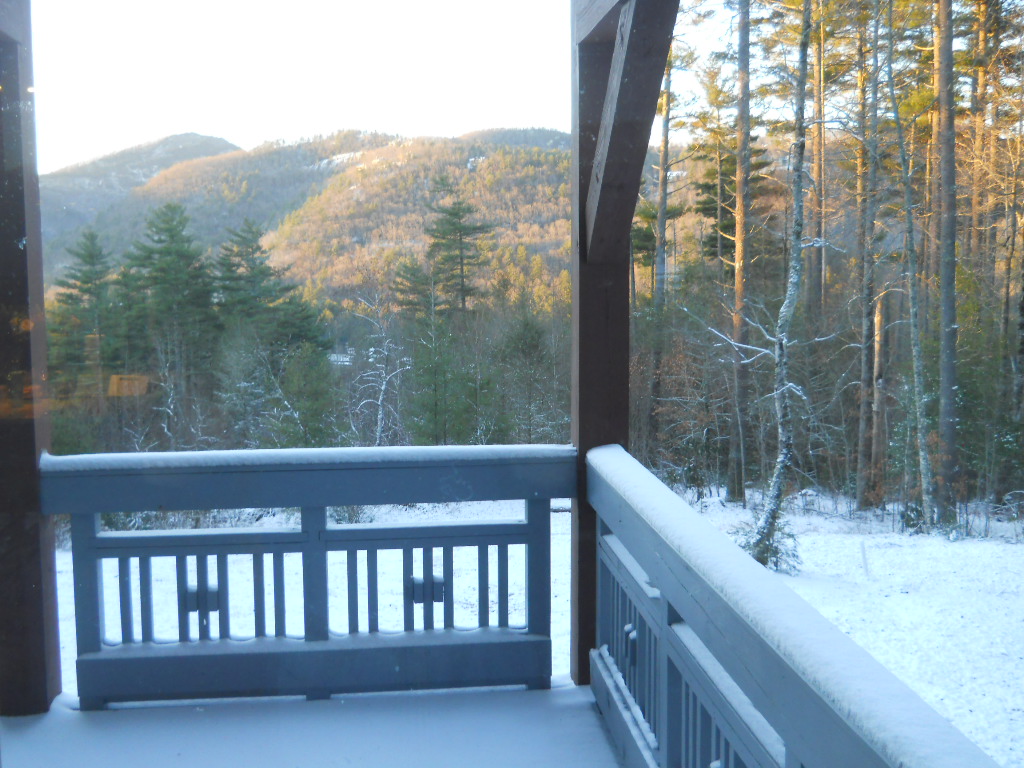Winter House Prep is about what things you should do or have already done to prepare your house for winter.
Winter’s first snow outside one of the Architect’s houses in the mountains.
So here we are, already with at least an inch of snow, in January, 2020. What things should you be doing, or should you already have done to make your house weather the weather?
HOSE BIBBS
Before the first freeze, you really should unscrew your hoses from all your exterior hose bibbs (faucets). Even with frostproof bibbs, leaving a hose attached can hold water there, where it is supposed to drip empty and such water there could freeze and expand and burst your exterior hose faucet, resulting in a very unpleasant plumbing problem during cold weather and likely in the middle of the night. Good luck finding a Plumber to fix that at that hour. Better to be safe than sorry.
SEALANT
If your house never had handymen go around with tubes of SEALANT (Not caulk, which is for interiors), you need to do that. Do Not use silicone (it sticks to one side of rough materials, and tears loose on the other side). Lexel by Sashco is a good all-round sealant, and there are a few others. What exactly needs to receive a line of sealant? ALL cracks and crevices at the exterior of your house. Except Under window and door sills that are supposed to drain wind-blown water. But yes, workers should use caulk guns to inject the sealant along all joints in exterior trimwork, particularly vertical joints between boards and trim, and where boards and trim abut doors and windows and along corners and along all changes in direction and along protrusions. Consult an Architect to understand more exactly. The idea is to seal all openings where wind, rain, ice, snow and bugs can enter your house. It is amazing how much INFILTRATION (unwanted air moving into your house or out from your house) occurs in most houses. Especially those that were never properly sealed. You can save yourself a lot of money on your power bills by sealing your house.
TRIM LANDSCAPING
What’s this got to do with colder weather? Well, when temperatures get colder, critters like squirrels and other pests will use trees overhanging your roof to jump onto that roof, then walk over to your roof edges, then crawl under the soffits, then find whatever cracks and holes there are along there to get into your attic. Why: because it is warmer in your house. And you have food in there. Once in there, they will set up house, have babies and establish an entire ecosystem just above your living space to support their new lives in your pest hotel. Same thing for bushes and tree limbs touching the sides of your house. Make it hard for pests to get onto and into your house. Don’t give them bridges and elevators. Kind of like the zombie apocalypse near the end of Game of Thrones, where the Knight’s Watch defenders pushed back the assault ladders of the WhiteWalkers, rather than simply let them climb on up. Push back against the invaders.
PAINT & STAIN
Before ice and snow blow onto your house, decks and trim, make sure they are properly sealed with paint or stain or other appropriate coatings. If your wood and other surfaces (even Hardie Siding) has open grain, those surfaces can wick in moisture, rot and transfer the water to the interior of your wall system. Same for decks: wood can rot, if not sealed. And the payoff is: your siding and decks and trim last much longer and that can save you tens or hundreds of thousands of dollars (much more costly than paint).
There are other things to do to prepare your house, but this is a good start. Stay warm!

